Alternative medicine offers many options for the treatment of varicose veins in the legs with folk remedies. For this purpose, ointments, tinctures, compresses, baths and bandages based on medicinal plants, bee products, chemicals and elements are used.Many recipes have no contraindications, but before using any method, you should consult a phlebologist.

ointment
An effective folk remedy for varicose veins on the legs is an ointment prepared from medicinal plants such as wormwood, horse chestnut, cabbage, garlic, Adam's apple, Kalanchoe, celandine. Vegetable oils (olive, castor, sunflower, cottonseed) and animal fats are used as a base.
Cabbage
White cabbage has been used to treat varicose veins on the legs for hundreds of years. The popularity of the method is due to its availability and the absence of contraindications to treatment. To make a compress, take a compact leaf and beat with a kitchen hammer or roll with a rolling pin until the juices appear. Outer leaves (green) are not suitable.
On the one hand, cold pressed vegetable oils (sunflower, olive, castor) are applied on the leaves and applied on the inflamed area. Secure with tube wrap on top. Compression is performed at night. This course is 30 days.
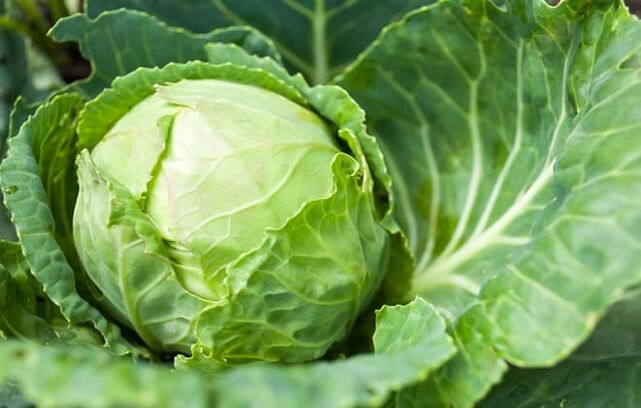
Instead of oil, you can lubricate the cabbage leaves with honey. You can also use calendula flower cream on cabbage leaves. To prepare it, take a glass of animal fat. The best option is guinea pig or badger, but indoor pork or beef will suit. It is necessary to dilute the fat in a water bath and add 2 tbsp. l. calendula flowers are crushed. Boil for 5 minutes, then strain the heat through gauze.
Cabbage leaves are dipped in boiling water for 10-15 seconds, cooled and ointment is applied to it. Apply the compress to the inflamed area, secure with a round tube bandage and leave overnight. Treatment is carried out for 2-2. 5 months (until permanent repairs). The cream not only reduces the manifestations of varicose veins, but is also a good prevention of possible complications.
clay
If there is no time to prepare an ointment for varicose veins with your own hands, you can use a quick and proven method. To do this, add a little purified water to the blue clay (to the consistency of thick sour cream). Apply the mass in a thick layer (1. 5-2 cm) on the affected area and tie with a towel. The duration of the procedure is 2 hours. This course is 1-1. 5 months.
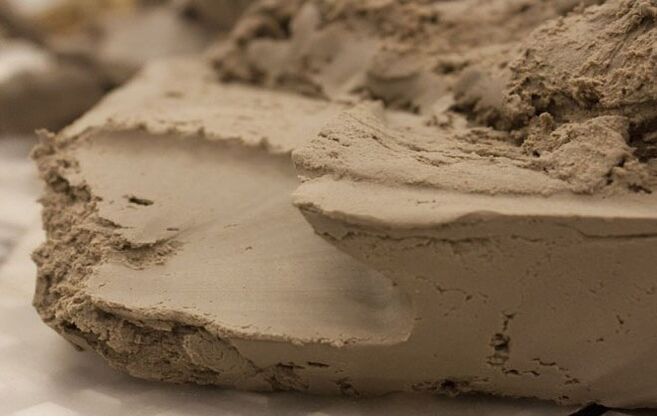
Kalanchoe
Kalanchoe (Kalanchoe) is a medicinal plant with a strong anti-inflammatory effect. It is used in traditional and alternative medicine, including for the treatment of varicose veins with folk remedies at home. Miracle ointment prepared on the basis of this plant eliminates swelling, relieves inflammation and pain, improves the appearance of the skin.
To cook you need to:
- 50 g of medical vaseline;
- 50 g of lanolin (animal wax);
- 50 g of Kalanchoe juice.
Mix all ingredients well to obtain a homogeneous mass. With severe pain, it is recommended to add 1 ampoule of anesthetic to the composition. Store in the refrigerator in a glass container. The ointment is applied on clean washed skin (you can wipe it with alcohol or vodka) 2-3 times a day. It is not necessary to wear a bandage and bandage the affected area. The course of treatment is 2-2. 5 months.
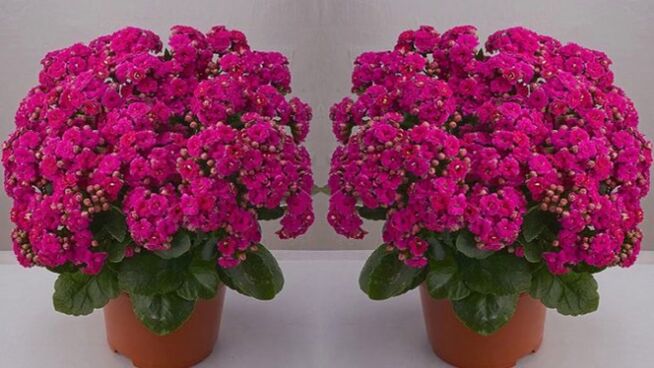
1 more recipe. Put half a cup of butter in a glass jar and hold at room temperature (until it becomes soft). Add 50 g of squeezed Kalanchoe juice and mix well. Instead of oil, you can use internal animal fats, instead of plant juices - the mass of crushed stems and leaves (80-100 g).
The ointment is applied to the leaves of burdock (or cabbage), which must first be watered with boiling water and cooled, and applied to the affected area. From above, the compress is fitted with a round bandage and covered with a cloth. It is better to apply the ointment at night. The course of treatment is 2-2. 5 months.
Mixtures based on Kalanchoe can cause a slight burning sensation (itching, tingling). If there is severe discomfort and pain, then treatment should be stopped and other methods should be chosen.
Colored
Another popular folk remedy for varicose veins in the legs is a tincture prepared on the basis of medicinal plants and bee products. The most effective of them are tinctures and infusions of horse chestnut, Kalanchoe, purple inflorescences, geraniums, garlic, onion peel.
To prepare a tincture of Kalanchoe, take a glass container with the required amount, fill up to half with a mixture of crushed leaves and stems of the plant and fill with vodka to the top. Insist in the dark for 1. 5-2 weeks.
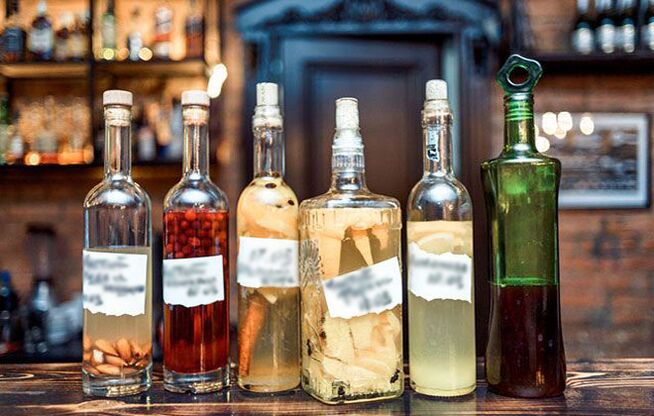
To enhance the effect, you can add white acacia inflorescences or flowers and leaves of comfrey (larkspur) into the tincture. Inflamed veins are moistened with the finished product 2-3 times a day. This course is 2. 5-3 months.
Oil
Among the folk remedies for the treatment of varicose veins, essential oils such as sage, cypress, geranium, black cumin, immortelle, lemon, and others are popular. It is used in two ways. They can be added to the water during bathing, which will help relieve swelling and strengthen blood vessels. They are also added to massage creams for anti-varicose massage.
garlic
Garlic, which has an anti-sclerotic effect, is a reliable tool for restoring elasticity and strengthening the walls of blood vessels in varicose veins. It is used for the prevention and treatment of all stages of the disease in the form of compresses, tinctures and mixtures.
To prepare the garlic compress, you need 1 medium head (about 50 g) and 100 g of natural butter (can be replaced with internal lard). It is better to use vegetables with white skin, blue (purple) garlic is more burnt.
Before bed, the resulting ointment is applied to the inflamed veins, wrapped in a dense cloth and fixed with a round bandage. In the morning, the remnants of the compress are washed with water. This procedure is repeated daily for 3-4 weeks.

Effective folk methods include oral intake of garlic in combination with honey. To do this, you need to grind 300 g of garlic to a porridge state and put in a glass container. Add 400 g of natural honey, mix and refrigerate for 2 weeks.
When the mixture is infused, it is taken in 1 tbsp. l. before meals (breakfast and lunch). The course is designed for 4 weeks, after which it is necessary to rest for 1. 5-2 months and repeat the treatment. The prepared mixture can be stored in the refrigerator for up to 35 days.
Linen
In the early stages of VRV, compression with linseed oil gives a good effect. They help relieve congestion, refresh the walls of blood vessels and improve blood circulation. Gauze soaked in oil is applied to the inflamed area, covered with cling film and tied with a round bandage. Compress is used for 2-3 hours 3 times a week. As a remedy for the prevention of VRV, flaxseed oil should be taken 1 teaspoon. on an empty stomach
Compressing
The widespread use of compresses in the treatment of varicose veins with folk remedies is due to their effectiveness, availability and safety. Most are allowed for use during pregnancy and lactation.
The disadvantage is that individual characteristics of the skin or large amounts of fat can prevent the healing substance from completely affecting the ducts. They are used as adjunctive therapy in combination with the main treatment.
tomatoes
An effective remedy for varicose veins is green tomato compress, which is recommended for use during exacerbation of the disease. They thin the blood, relieve inflammation, relieve pain. To prepare the compress, you need to cut the tomatoes into circles and apply to the problem area. Wrap with foil on top and secure with a round bandage. The duration of the procedure is 3-4 hours. The course of treatment is 3-4 weeks. You can compress alternately with a swipe with apple cider vinegar.

Boil chamomile
To cure varicose veins in the early stages will help the use of compresses of chamomile. It should pour a glass of boiling water 3 teaspoons. flowers, leave for half an hour, moisten gauze in a solution and apply (in several layers) to the veins. Cover with foil and secure with a round bandage. Keep 3-4 hours. This course is 2-3 weeks.
Boil the larch bark
Decoction of larch bark, which increases the strength and elasticity of blood vessels, has a good therapeutic effect. For 0. 5 liters of boiling water take 3 tbsp. l. bark (without top). Insist in a thermos for a day. A cloth soaked in the solution was wrapped around the feet for 3 hours, covered with a film on top and fixed with a bandage. This course is 2-3 weeks.
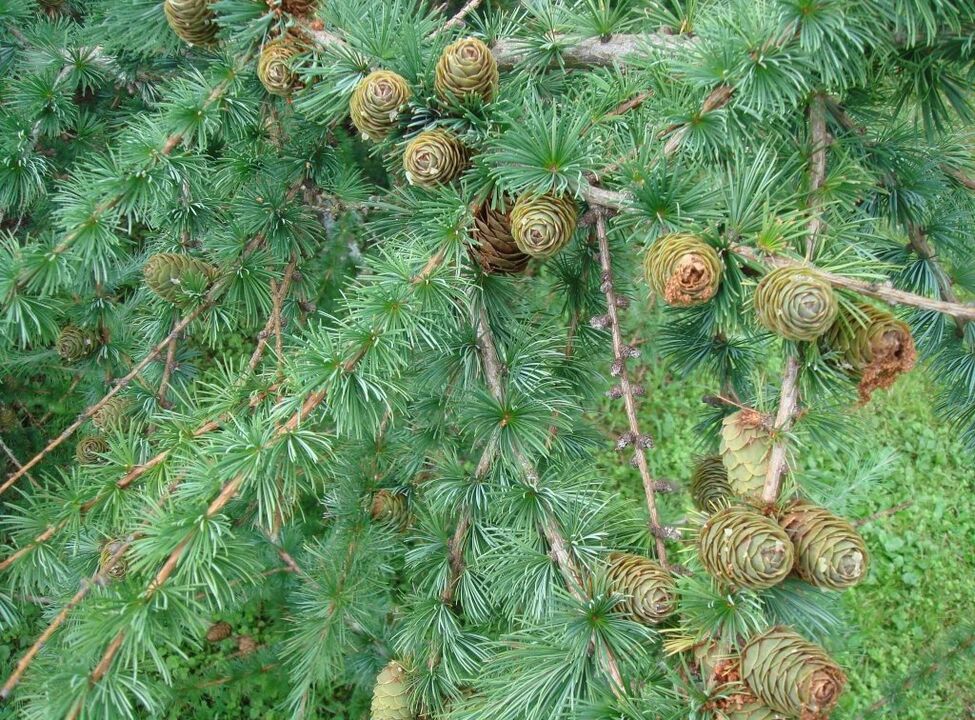
Potatoes
Potatoes are used to treat varicose veins. To prepare the compress, some of the washed and dried potatoes are rubbed on a fine grater (along with the skin). The freshly prepared mass is applied in a thick layer to the affected area and wrapped with a cotton cloth in several layers. Hold the compress for 4-6 hours. The course of treatment is 1. 5-2 months.
Jus
The composition of many folk recipes for varicose veins on the legs includes juice. In addition, when freshly squeezed, they can significantly reduce disease manifestations and serve as VRV prophylaxis. The most effective of them:
- carrot;
- bit;
- parsley juice;
- spinach leaf juice;
- celery stalk juice.

halia
With varicose veins, a good result is treatment with ginger, which is used externally and orally. For internal use, it is used as a tea or infusion. To make tea, you need to cut a few thin rings (7-10 g) from the roots and pour 0. 5 liters of boiling water. Insist 15 minutes.
The use of ginger root is most effective in cases where the disease is provoked by overweight and metabolic disorders. It is advisable to treat varicose veins in men with ginger, because the roots of this plant, in addition, normalize the work of the male reproductive system.
For external use, it is necessary to grate ginger root on a fine grater, mix with honey (1: 1) and apply a compress to the inflamed area for 4-5 hours. Top with wool fabric. Instead of compressed paper, burdock or cabbage leaves are used. This course is 1-2 months.
viburnum
You can treat varicose veins at home with the help of viburnum berries, using them in the form of compresses or healing drinks. To prepare the compress, viburnum is rubbed through a colander, applied to a cloth and applied to the affected area, wrap it with film and attach it with a bandage. This course is 3-4 weeks.
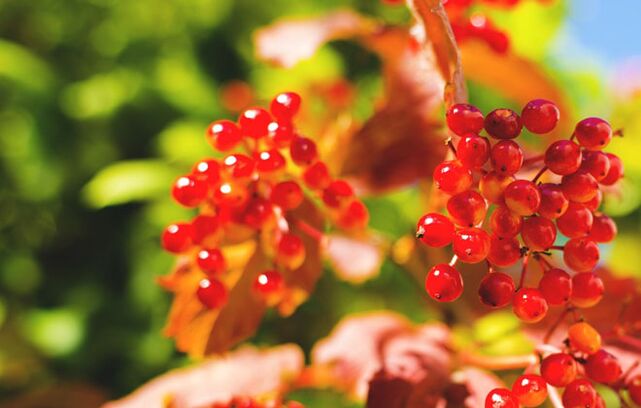
For oral administration, viburnum juice is mixed with honey. For 0. 5 liters of juice, take 2 tbsp. l. (without slides) honey. Drink before meals for 2 tbsp. l. 3-4 times a day. This course is 1. 5 months.
Lemon
You can treat varicose veins with lemon, use it to prepare anesthetic compresses and bring them inside. To prepare the compress, the lemon is cut into circles and applied to the inflamed veins, covered with a film and fixed with a bandage. This course is 2-3 weeks.
Honey and bees
The healing properties of honey and other bee products have been used for centuries. Regular intake of natural honey facilitates the journey of VRV, and honey compresses and wraps the body tightens blood vessels, relieves inflammation, and improves the appearance of the skin.
Apiterapi
Apitherapy offers many effective ways to treat and prevent VRV with the help of bee products such as propolis, honey, royal jelly, bee venom, pollen, faint disease, wax, zabrus, etc.
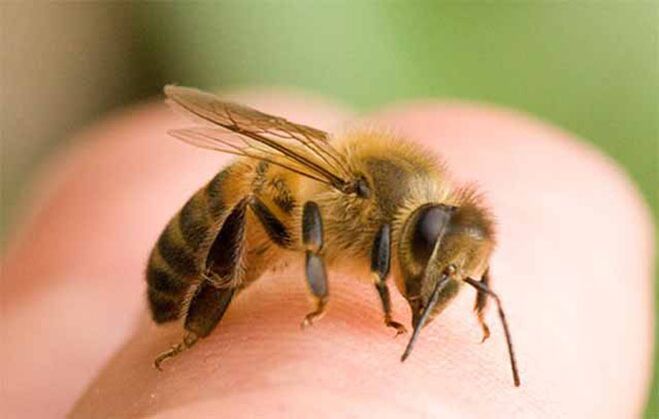
Propolis
Antimicrobial propolis containing natural antiseptics, vegetable oils and essential resins is used to treat varicose veins at home. It is used in the form of tinctures and ointments. To prepare the tincture, 100 g of raw material is crushed and poured into 0. 3 liters of alcohol or vodka. Infusion for 1 month in a dark glass container, shaking occasionally. Apply in the form of compresses and lotions.
bee epilepsy
Dead bees are used to provide regenerative compresses. To do this, take the required amount of dead bees (depending on the size of the affected area), pour boiling water over it and let it brew for 20-30 minutes. After that, the water is drained, and steamed beeswax is applied to the inflamed veins, wrapped with film and covered with a dense cloth. It is advisable to do compresses at night. This course is 1-1. 5 months.

What else is useful
There are many ways to treat and prevent varicose veins with folk remedies, from which you can choose the most suitable. Alternative methods are used as adjuvant therapy at any stage of VRV, but the greatest effect is achieved in the early stages of the disease.
Apple cider vinegar
Apple cider vinegar contains more than 20 components that have a beneficial effect on blood vessels. With regular use, it provides a lasting healing effect. It is used in the form of bandages, compresses, baths, in addition, it is taken orally. Most useful in the early stages of VRV.
The easiest way is to rub the inflamed area with apple cider vinegar. With a cotton swab (easily, without pressure) moisten the problem area several times. It is not necessary to cover the treated skin area. This procedure is performed 3-4 times a day for 1 month.
To ensure the quality of the fruit vinegar, it is better to cook it yourself than the local apple variety (even the carcass will do).
Nutmeg
For the treatment of varicose veins without surgery, strong medications such as nutmeg are used. It is taken as a powder, alcohol tincture, tea, nutmeg-honey mixture, or beverage. Most useful in the early stages of the disease. Powder prepared from fresh nutmeg, take 1 tsp. (without top) 30-40 minutes before the first meal. You can dilute it with boiling water and add a little honey. Drink warm for a month.

pumpkin
The internal fibrous pulp of pumpkin is used as an adjunctive therapy in all stages of the disease. The fiber is released from the seeds and applied to the inflamed area. Instead of compressed paper, it is better to use burdock or cabbage leaves. From above, the compress is insulated with a woolen cloth and left overnight. The course of treatment is 1. 5-2 months.
In addition, with venous edema, it is necessary to periodically include vegetables in the diet and spend fasting days on the pumpkin 2-3 times a month.
Fish fat
As an adjunct therapy for varicose veins in women, folk remedies suggest the use of fish oil. When taken orally, it promotes weight loss and normalizes metabolism. Fish oil is also a reliable way to prevent osteoporosis during menopause and after menopause.

A good effect in the treatment of VRV is given with a wrap based on fish oil and honey. The components are mixed in a ratio of 1: 1. Natural linen fabric is impregnated with this composition and the legs are wrapped with it for the night. The top is covered with compressed paper and fixed with a tube wrap.
Hydrogen peroxide
Traditional medicine offers many ways to treat VRV with hydrogen peroxide. Proponents of this method note the simplest positive effect of peroxide on the condition of blood vessels. Representatives of traditional medicine speak vaguely about these methods of treatment, given that they are not sufficiently studied, and therefore unsafe. The use of hydrogen peroxide, even in the form of compresses, is necessary after consulting your doctor.
Iodine
Iodine can be used as a folk method to treat varicose veins. This method shows good results in the early stages of VRV. If there is no allergy to the chemical element, iodine mesh is applied to the affected area for 2-3 weeks before bedtime. After another 2-3 weeks, the course is repeated. After treatment with iodine, blood circulation is improved and the focus of inflammation is eliminated.
salt
Salt for varicose veins is used in the form of salt bandages and baths. To prepare the bandage, sea salt should be diluted with water to a porridge state, laid out in a layer of 1-2 cm on a cotton cloth and applied to the inflamed veins. Keep the bandage on for 3-4 hours. The course is 1 month.
Soda
With varicose veins on the lower part of the legs (in the early stages), a good result is the use of a soda bath. In the presence of large affected areas, it is recommended to take a soda bath. For the bath (200 l), 7 tbsp. l. soda (with a medium slide), previously diluted in a little hot water. The duration of the procedure is 15 minutes, the water temperature should not be higher than + 37. . . + 40 ° S.
As a result, all blood vessels heal. After bathing, you need (without wiping your body) to wrap yourself in a towel and rest for half an hour. The procedure is performed daily. On days without the procedure, a moisturizer should be applied on the body.
Soap
Traditional medicine offers other ways to treat VRV, effectively and safely. You only need to use natural laundry detergent (no additives). It is used in the form of compresses, lotions and ointments.
Anti-varicose massage with soap bubbles is practiced. In addition, you can apply a thick foam to the affected area and leave on all day. Wash before bed. This course is 3-4 weeks. If itching, irritation, exfoliation appear after the procedure (for sensitive skin), treatment should be stopped.


















